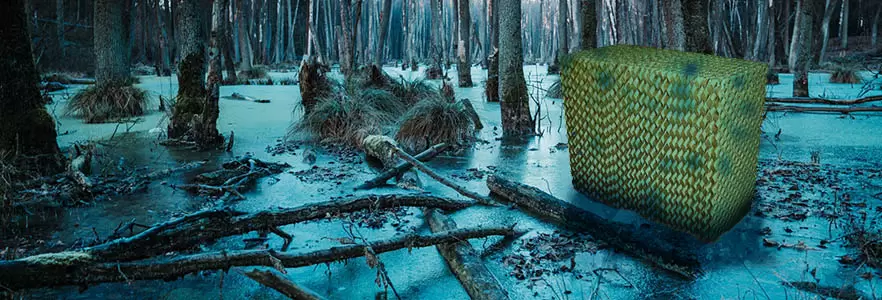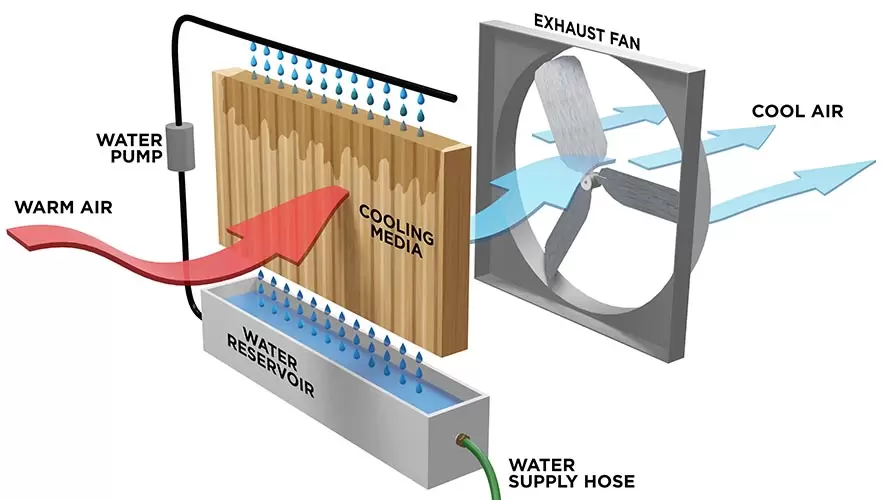
Close

Close

There are many different options available for cooling the air when temperatures soar. Among the most common are air conditioners, portable air conditioners, misting fans, atomized evaporative cooling systems (such as Power Breezer), and swamp coolers.
Swamp coolers are an option for those who want to cool the air in a convenient, versatile, energy-efficient manner. While there are many different types of devices for cooling, swamp coolers are a popular choice because they provide efficient cooling at a reasonable cost, but with a variety of disadvantages as compared to newer evaporative cooling technology using atomizers. Read on to learn more about these machines, along with their pros and cons, and how you may be able to take advantage of their benefits.
A swamp cooler is a device that uses moisture to cool the air. Also known as a type of evaporative air cooler, these machines are designed to take in warm air and transform it into cool air using cooler pads which have water flowing on them. In the process, the cool air is blown into a space using a motorized blower and pushing it through a vent.
The concept and functioning behind swamp coolers can be traced back to ancient Egypt, where a similar type of technology was developed by hanging wet blankets over doorways. In this manner, when hot, dry air passed through the fabric, the air would get instantly cooled off. In the present day, the same concept is used with swamp coolers. An electric fan is a major component of the modern design, used to blow the cool air into the space.
The name “swamp cooler” is a bit of a mystery, as these systems would not work well if they were installed in a hot, humid environment. It could be attributed to their ability to add humidity to the air, making dry environments somewhat more “swamp like.” Additionally, it may also have to do with the swampy smell they can produce if they are not maintained and cleaned often enough.
Swamp coolers are used in a wide array of locations, however, they are most commonly used in places such as Arizona, Nevada, and Utah where the climate is hot and dry. When the level of humidity is too low, the air quality can get uncomfortable. Swamp cooler systems are perfect for locations with relatively low humidity, as they add moisture to the air. In these conditions, the water-fueled breeze of a swamp cooler can create an exceptionally comfortable environment, while also bringing in the benefit of helping the body boost its perspiration rate. This can produce an even cooler sensation, allowing bodies to trigger their innate need for perspiring in such heated conditions, and also cooling the air for a two-fold effect.
The simple technology behind swamp coolers is their utilization of water’s physical properties. As water evaporates, the temperature of the dry air can drop. With a swamp cooler, a fan is used to amplify the process of evaporation and to channel cool air where needed.

Swamp coolers operate using a variety of parts that contribute to their overall functionality. Here is a breakdown of the parts of a swamp cooler to give you an idea of how they work, what parts they use to operate, and what goes into the process of cooling the air.
Evaporative Pads: The inside of the swamp cooler is lined with evaporative cooling pads, which must be wet for the system to run correctly. These pads work to cool and clean the air as the cooler works.
Blower: The blower is powered by the blower motor, and it brings in cool air by turning the blower. The cool air is propelled out of the system, which then cools the air.
Water Supply Valve: The water supply valve connects to the cooler through a copper tube. This is the mechanism that brings the water into the unit.
Float: The float rests on the bottom of the swamp cooler, and rises with the water level within the system. It is designed to shut off the water supply valve when the water level reaches a certain height. It is an essential part of the swamp cooler system; if the float malfunctions or ceases to work, the whole system may fail and there is potential for the cooler to overflow.
Pump: The pump of the swamp cooler is designed to transfer the water through the distribution lines, which keeps the evaporative pads moist.
There are numerous benefits to using swamp coolers; among these are:
While swamp coolers are exceptional devices for providing reliable, comfortable, and cost-effective relief from the heat, there are some cons to consider. Among these are the following points:
Swamp coolers offer a dynamic option for cooling spaces, under specific conditions. These machines can be a great way to provide temperature control at an affordable cost, and with superb energy efficiency. If you are seeking an alternative to traditional air conditioning, with good value and performance, a swamp cooler may be the ideal solution.
Using similar technology and a highly efficient process, Power Breezer cooling systems offer an alternative option to swamp coolers. As trusted by all branches of the United States Military, Amazon, and the NFL – among many other companies and industries, these atomized evaporative coolers machines are a high-powered, industrial-strength option to consider if you are searching for serious cooling power.













